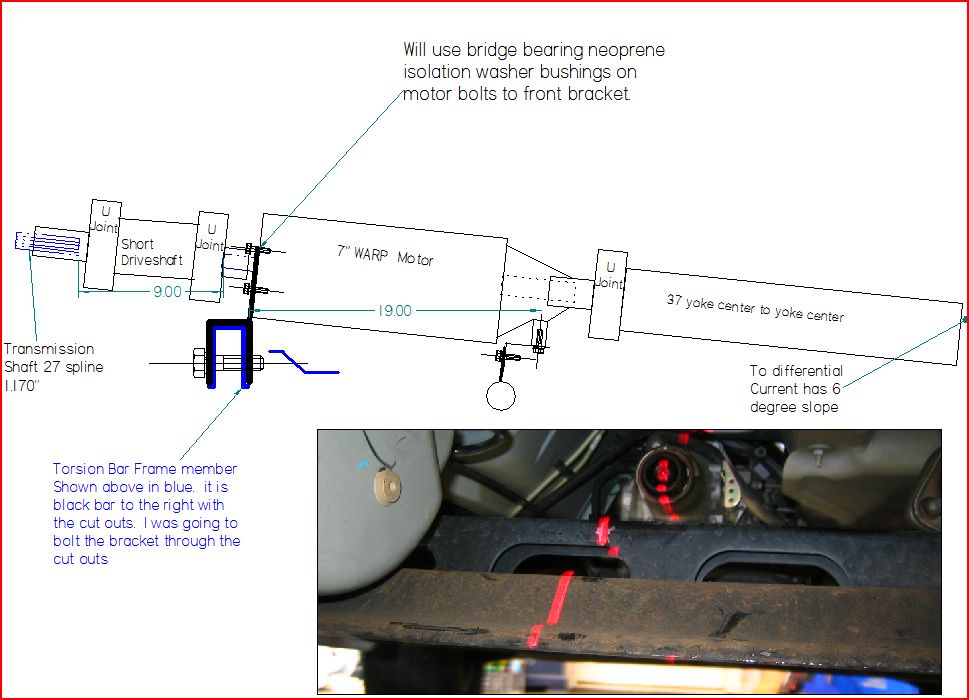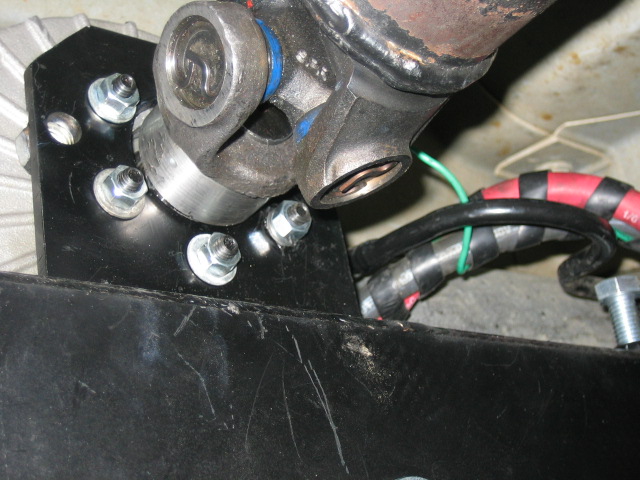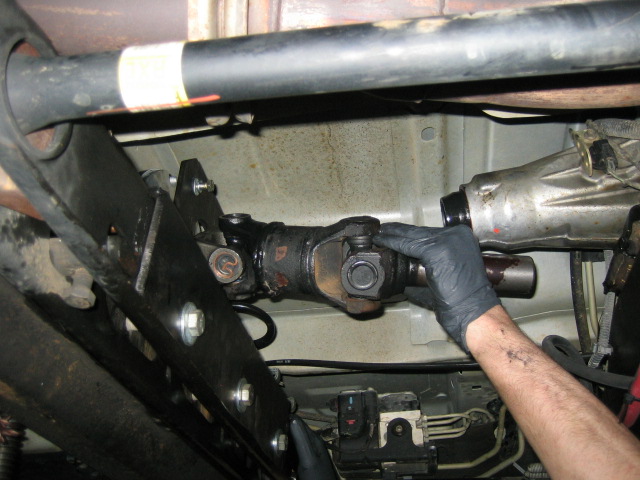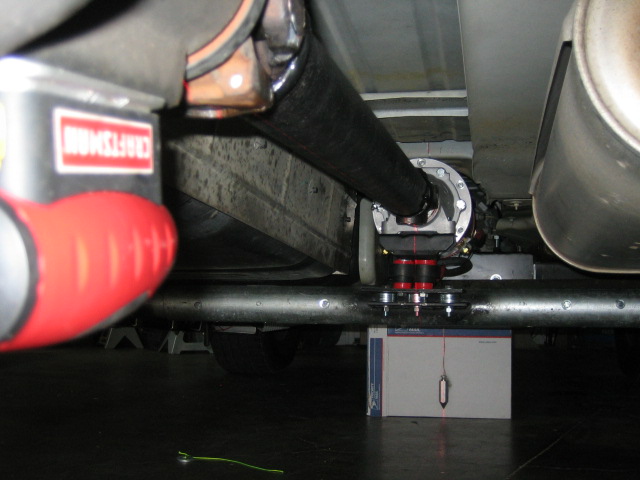|
To the right
is a diagram of how the motor is installed. I had two shorter drive
shafts made up from one I picked up at a salvage yard. This allows me to
preserve the original driveshaft so I can reverse the process if necessary.
Something I
had to do once when the first motor shaft twisted. |
 |
|
Here is a picture of the new NetGain motor. It comes with a slip yoke on a
1.370" 32 tooth shaft. This is supposed to be the same spline cut
as on a GM HD Turbo 400 transmissions. |
 |
|
Here is a
shot of the motor attached to the front mounting bracket. You can also see
the short front driveshaft.
The
bracket slides over the torsion bar frame member. The nuts welded on
top allow for vertical alignment. With 72V and a 450 amp controller
the motor should produce about 40 HP, giving a 14% improvement in peak HP
and a 22% boost in torque. BUT since electric motors produce their maximum
torque at 0 RPM, when gas motors are at their worst, it should give a
noticeable boost in performance.
Each
of the 6 mounting bolts has a neoprene isolator washer used to isolate
bridges in earthquake areas. I am using this to help dampen vibration from
the drive shaft. This is in addition to the rubber mounts on the torsion
frame member.
The
shop work on the front and rear motor mounts ran about $250. |
 |
|
This is a
shot of the front of the electric motor when mounted in the truck. You
can also see the 0/0 power wires to carry the electric current from the
controller to the motor.
I see this
current frequently spike past 500 amps.
|
 |
|
Here
is a shot of the front, shorter driveshaft to connect the electric motor to
the transmission. The U joints allow for a slight off-set but we did
our best to line things up.
I
tried an offset to see if I can install a larger motor and unfortunately I
had a vibration between 30 and 40 mph. So I put the motor back into
alignment.
|
 |
|
This is a
shot of the rear motor mount. I adapted the bracket made for the ADC motor
to this TransWarP motor. While not ideal it does appear solid. I used a
combination of a Jeep transmission mount and some large neoprene washers.
The motor has
a double wide bushing and a fitting for greasing.
I think
ideally I would have mounted to a plate welded to the top of the rear frame
mount but I have run out of money and patience.
|
 |
|
This is a shot with the custom rear driveshaft connected to the electric
motor.
You can
see my attempt to get everything in alignment with a laser tool.
The plumb bob is hanging from the end of the transmission yoke.
Several have asked if the extra drag or friction will cause a drop in MPG.
Theoretically it should. I have two test hills that I have been using to
test this on a lightly traveled end of I-26. It seems like MPG dropped by
1% on the trip up the hills with the instant MPG based on 8 averaged runs.
On the coast down I have also seen nearly a 1% decline in the speed in
neutral. So the drag does not seem to be very significant.
I
crest the hill at 55MPH and depending upon direction coast to 70 or 75 on
the downhill side
. |
 |
| |
|
